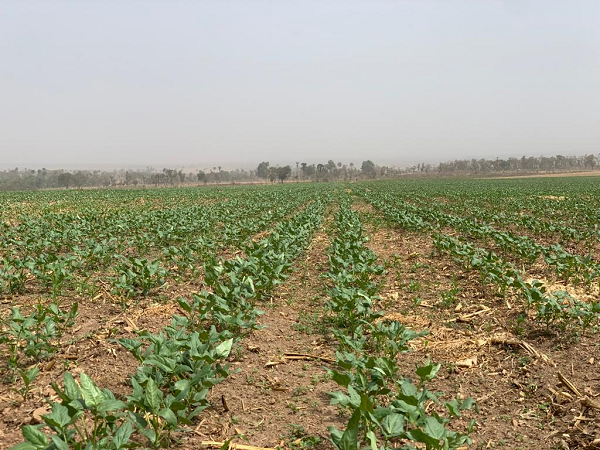
The African Agricultural Technology Foundation (AATF) has identified suitable planting windows for cowpea – also known as beans – for the different ecologies in the country.
The AATF regional representative for West Africa, Dr. Jean Baptiste, who disclosed during a recent visit to Pandagric Farms, near Keffi, Nasarawa State, said the windows would enable farmers to cope with the vulnerabilities of climate change.
The cowpea field in Panda, spanning over 35 hectares, is part of the dry season cowpea production introduced by AATF to ensure the variety records maximum yield in the absence of insects and other climate conditions which make it vulnerable.
Baptiste noted that due to the impact of climate change – resulting in either too much or too little rainfall or early cessation of rain – beans are not producing maximally, leaving Nigerian farmers miserable during harvest.
“After careful study of the situation, we have come to understand that because farmers are not guided on when to plant, crop productivity is often interrupted by climate uncertainties. The rainfall pattern for the country is not uniform and each year comes with its surprises; so, it is important for farmers to be properly guided,” he said.
Baptiste noted that, in the last few years, farmers have been suffering from several uncertainties associated with the rainfall pattern and this has greatly reduced cowpea productivity. “It is either that the rain is too much,” he disclosed, “submerging cowpea farms all over the place as a result of flash-floods or the rains cease suddenly or drought sets in when the crop needs enough water.”
He advised cowpea farmers to take advantage of identified planting windows carefully decided upon, following close studying of weather patterns over the last few years.
Baptiste called on farmers in Nigeria’s Sahel – Borno, Yobe, Jigawa, parts of Katsina and Sokoto states – to plant from the third and fourth week of June to enable them maximise the opportunities of early rains and beat any possibility of early cessation while those in the Sudan Savannah – Kebbi, parts of Sokoto, parts of Zamfara, parts of Katsina, parts of Kano, Jigawa, parts of Bauchi, parts of Yobe and parts of Borno states – plant from the first to the second week of July.
He equally urged those in the Northern Guinea Savannah – Bauchi, Kaduna, parts of Katsina, Kano and Zamfara – to commence planting between the third week of July and first week of August while those in Southern Guinea Savannah – Niger, Kwara, parts of Abuja, Adamawa, Taraba and Gombe – have the first to third weeks of August to plant.
A statement by AATF’s communication officer (West and Central Africa), Alex Abutu explained that, after two years of sampling, some farmers have taken advantage of the prolific nature of the pod-borer-resistant cowpea to undertake two planting seasons within one planting year.
According to statistics from the Institute for Agricultural Research (IAR), Ahmadu Bello University Zaria, the PBR Cowpea is the most sought-after cowpea variety in the country currently.
The variety is most preferred by farmers due to its early maturing quality, use of less chemical spray, high yielding and high fodder production.


